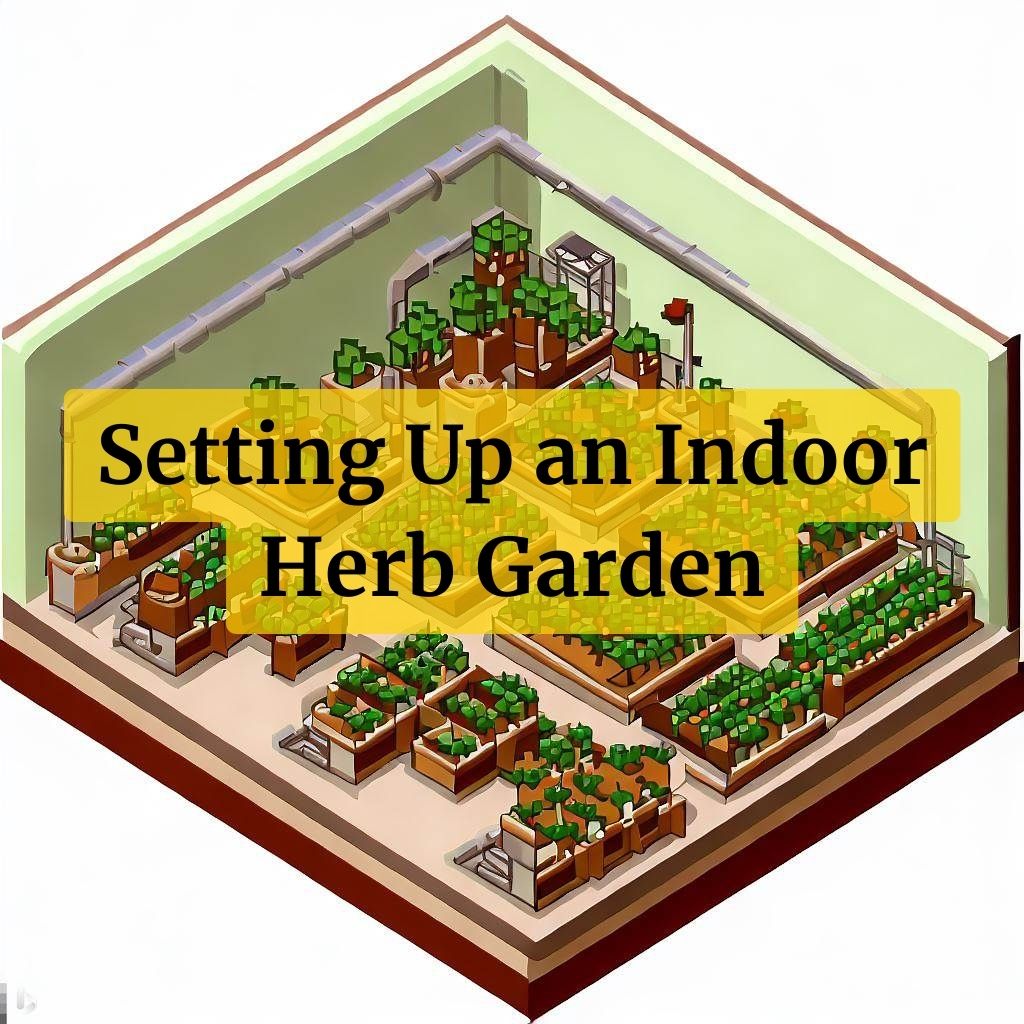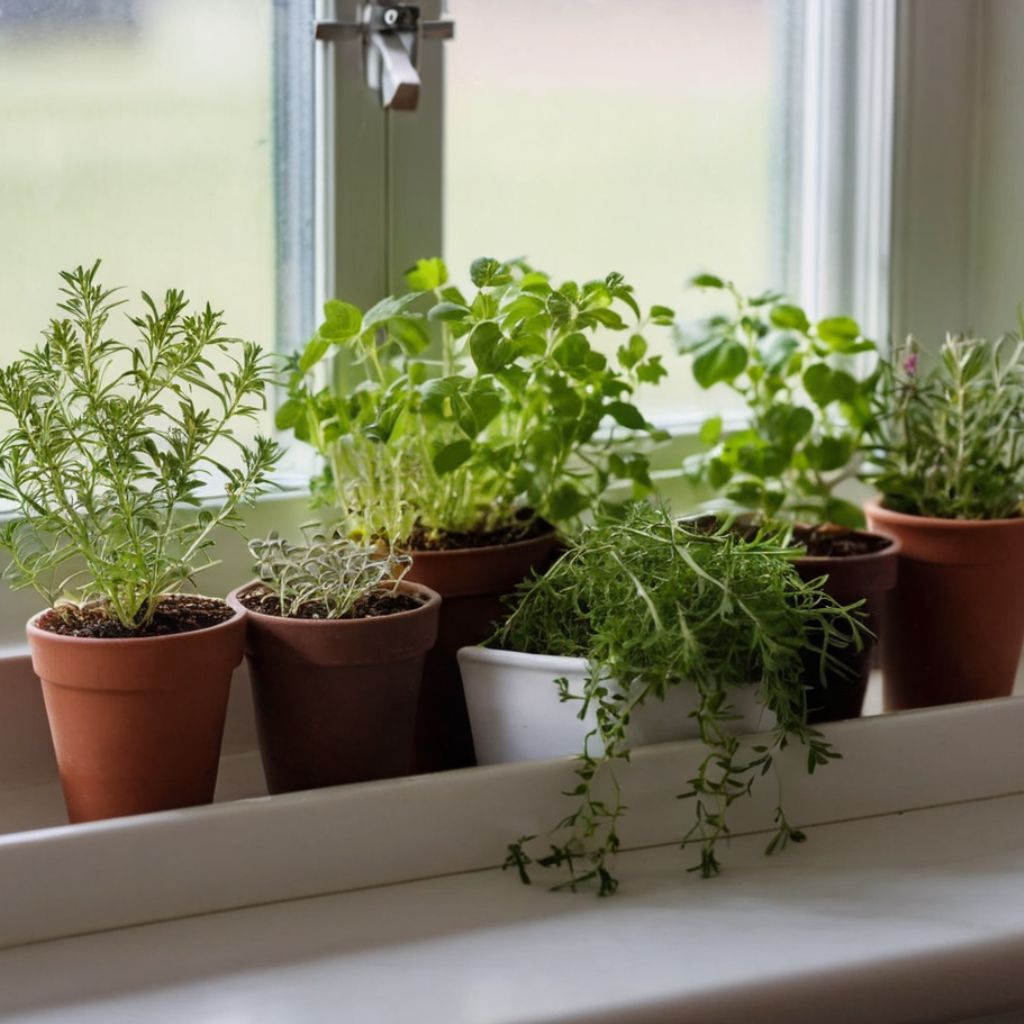
Growing an indoor herb garden is a great way to have fresh herbs at your fingertips year-round. To get started, select a container with drainage, add a soil blend that drains well and includes compost for nutrients, and choose herbs that are easy to grow indoors, such as basil, chives, mint, and parsley. Place the herbs in a sunny spot and use a low dose of liquid fertilizer once or twice a month. If your space lacks sunlight, consider using fluorescent grow lights to ensure the herbs receive sufficient light.
In this article
Getting started
Starting an indoor herb garden is easier than you might think, and it’s a fantastic way to elevate your culinary endeavors.
To get started, you’ll first want to choose the herbs you’d like to grow. Popular choices include basil, rosemary, mint, thyme, and parsley, but feel free to select herbs you love and will use in your cooking.
Once you’ve made your selection, it’s time to find suitable containers. Look for pots or containers with good drainage to prevent overwatering.
When it comes to soil, use a well-draining potting mix designed for herbs, avoiding garden soil, which can compact and hinder drainage.
Next, plant your herbs, leaving enough space between them to allow for growth.
Remember to water your herbs consistently, keeping the soil evenly moist but not soggy.
To encourage healthy growth, use a balanced, water-soluble fertilizer at half-strength every 2-4 weeks during the growing season.
Lastly, don’t forget to regularly trim your herbs to promote bushier growth and prevent them from becoming leggy.
Choosing the right location

Selecting the right location for your indoor herb garden is crucial to its success. First and foremost, consider light.
Herbs thrive in bright light, so try to place your garden near a south-facing window if possible. East or west-facing windows can also work, but you may need to supplement with artificial light.
Keep in mind that most herbs prefer temperatures between 60-70°F (15-24°C), so avoid areas near drafts or heating vents.
Additionally, herbs enjoy moderate humidity, so if your indoor air is dry, consider using a humidity tray or misting the plants occasionally.
Lastly, ensure you have enough space for your herb pots. A kitchen windowsill, a dedicated shelf, or a sunny corner are all great options.
Sunlight requirements
While direct sunlight is ideal, many herbs can adapt to less direct sunlight or artificial light. If direct sunlight is scarce in your home, you have options. Herbs like basil, mint, and parsley can adapt to indirect sunlight.
Consider placing your herbs near a bright, but not scorching, window. If you’re in a situation where natural light is limited, consider using grow lights designed for plants. Position them above your herbs for 12-16 hours a day to mimic natural sunlight.
To ensure even growth, rotate your pots every few days to provide all sides of your herbs with adequate light exposure.
Growing herbs all year-round
One of the most exciting aspects of indoor herb gardening is the opportunity to enjoy fresh herbs all year long.
Here are some tips to keep your herb garden flourishing throughout the seasons:
- To maintain a consistent room temperature within the preferred range for your herbs, use curtains or blinds to shield your herbs from extreme temperatures.
- In colder months or if natural light is scarce, rely on grow lights to provide the necessary illumination for your herbs.
- Regularly trim your herbs but be mindful not to remove more than one-third of their growth at a time, as this encourages fresh growth and prevents overcrowding.
- Adjust your watering schedule in the winter to prevent root rot; allow the soil to dry slightly between waterings.
- Keep an eye out for indoor pests like aphids or spider mites, which can become problematic in closed environments. If needed, use natural remedies or insecticidal soap.
- Lastly, harvest your herbs by snipping leaves or stems as needed. This encourages continuous growth and ensures a steady supply of fresh herbs.
In conclusion, setting up an indoor herb garden is an enjoyable and rewarding endeavor for herb enthusiasts and home cooks alike.
With the right herbs, containers, and a little TLC, you can have a year-round supply of fresh, aromatic herbs at your fingertips.
Remember, it’s all about finding the perfect spot, providing adequate light, and maintaining a consistent care routine.
So, roll up your sleeves, get your hands in the soil, and let your Green Fingers bring your indoor herb garden to life!
Happy gardening!







